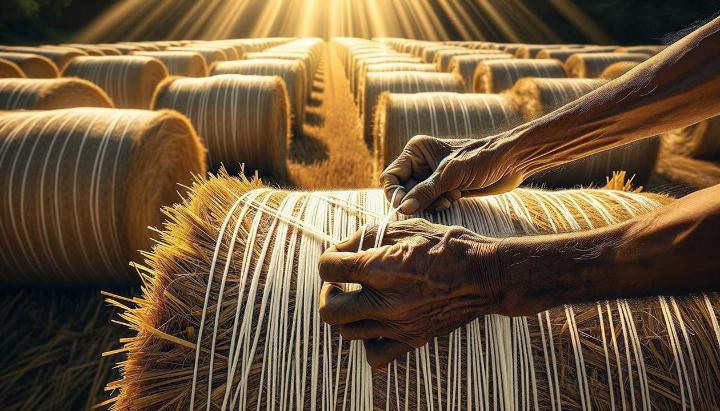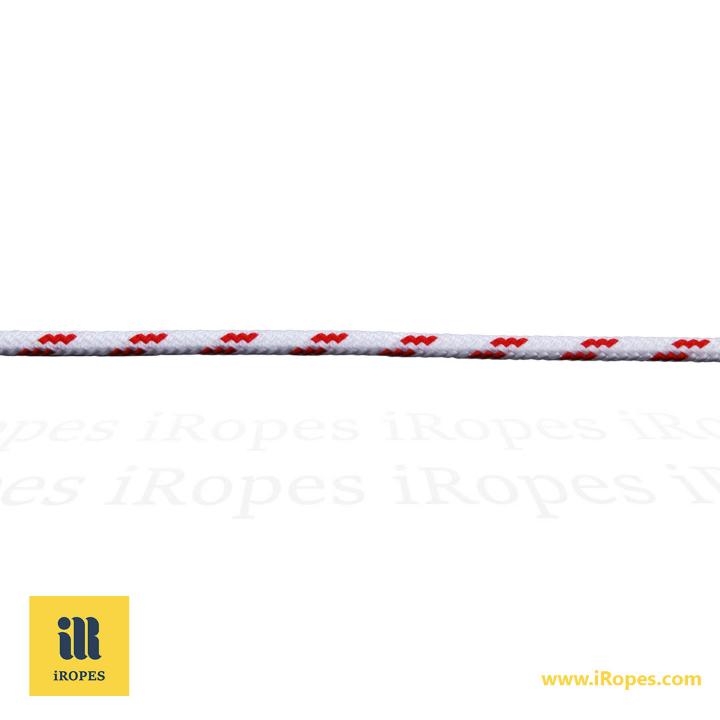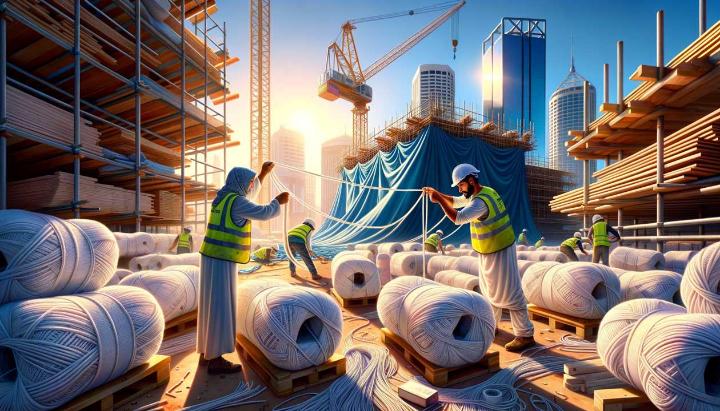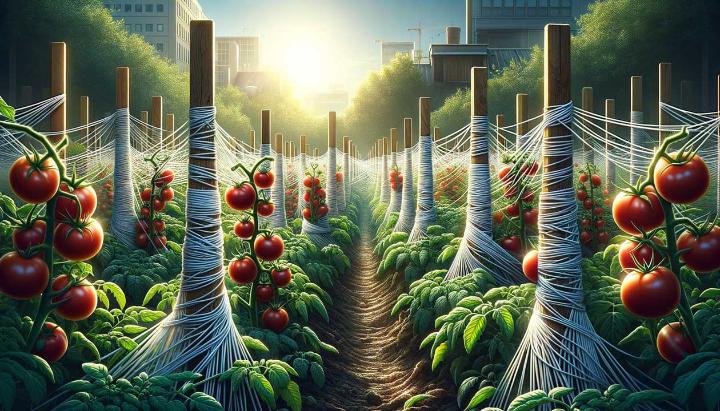Have you ever wondered how a simple piece of twine could revolutionise industries and transform everyday tasks? Enter polypropylene tying twine - the unsung hero of the binding world. This versatile wonder material has quietly woven its way into our lives, from sprawling agricultural fields to bustling construction sites and even our own backyards.
In this exploration of polypropylene tying twine, we'll unravel the secrets behind its remarkable strength, durability, and adaptability. We'll delve into the science of its composition, the art of its construction, and the myriad ways it's reshaping how we secure, bundle, and organise in both professional and personal spheres.
Whether you're a seasoned industry professional or a curious DIY enthusiast, understanding the material, structure, and applications of polypropylene tying twine could be the key to unlocking new levels of efficiency and innovation in your projects. Join us as we tie together the fascinating story of this indispensable tool, and discover why it's become the go-to choice for those in the know.
Understanding the Polypropylene Material
Have you ever wondered what makes polypropylene tying twine so special? Let's dive into the fascinating world of this versatile material that's revolutionized the way we tie things up!
Polypropylene, or PP for short, is a thermoplastic polymer with a chemical formula of (C3H6)n. It's the second-most produced plastic globally, and for good reason. This remarkable material offers a unique combination of properties that make it ideal for a wide range of applications, including our beloved tying twine.
Properties and Characteristics of Polypropylene
When I first encountered polypropylene twine on my uncle's farm, I was struck by how light yet strong it felt. This seemingly contradictory combination of properties is what sets polypropylene apart:
- Low density: It's incredibly lightweight, making it easy to handle and transport.
- High tensile strength: Despite its light weight, it can withstand significant stress without breaking.
- Chemical resistance: It's inert to most chemicals, ensuring longevity in various environments.
- Low moisture absorption: This keeps the twine from becoming waterlogged and heavy.
But what really makes polypropylene stand out for tying twine? Its ability to resist UV degradation and oxidation when properly treated. This means your twine won't break down quickly under the harsh sun, a crucial factor for outdoor use.

Advantages of Polypropylene Over Other Twine Materials
Compared to natural fibres like sisal or jute, polypropylene tying twine offers several advantages:
- Durability: It outlasts natural fibres in most conditions, especially outdoors.
- Consistency: Synthetic production ensures uniform strength and quality.
- Cost-effectiveness: Its efficient production process makes it more affordable for large-scale use.
- Versatility: It can be easily colored and manufactured in various thicknesses and strengths.
Have you ever tried using different types of twine for the same job? The difference in performance can be striking. Polypropylene's unique properties often make it the go-to choice for many applications.
Durability and Resistance to Wear and Tear
One of the most impressive aspects of polypropylene tying twine is its resilience. I've seen it withstand the scorching Australian sun and the salty sea breeze without losing its strength. This exceptional durability comes from:
- High melting point: It maintains its integrity even in hot conditions.
- Abrasion resistance: The twine can rub against rough surfaces without fraying.
- Rot resistance: Unlike natural fibres, it doesn't decompose when exposed to moisture.
These properties ensure that polypropylene tying twine remains reliable for extended periods, even in challenging environments. Whether you're securing a tarp on a construction site or tying up plants in your garden, you can trust polypropylene twine to hold strong.
Understanding the material properties of polypropylene helps us appreciate why it's such a popular choice for tying twine. Its unique combination of strength, durability, and versatility makes it an invaluable tool in various industries and everyday applications. Next time you're working with polypropylene tying twine, take a moment to marvel at the science and innovation behind this simple yet indispensable product!
Understanding the Structure of Tying Twine
Have you ever wondered why some tying twine feels smooth while others have a rough texture? The secret lies in the structure of the twine, which plays a crucial role in its performance and applications. Let's unravel the mystery of twine construction and discover how it affects the strength and versatility of this essential tool.
Types of Twine and Their Composition
Tying twine comes in various forms, each with unique characteristics suited for different tasks. The two main types of twine construction are:
- Braided twine: Constructed by interweaving multiple strands, creating a smooth, round profile with excellent strength and knot-holding ability.
- Twisted twine: Made by twisting fibres together, resulting in a more textured surface and greater flexibility.
The composition of the twine also varies, with materials ranging from natural fibres to synthetic polymers:
- Cotton: Soft and biodegradable, ideal for gentle tying tasks in gardening.
- Hemp: Strong and durable, perfect for heavy-duty outdoor applications.
- Jute: Eco-friendly and naturally resistant to rot, great for gardening and crafts.
- Polypropylene: Synthetic, lightweight, and weather-resistant, suitable for a wide range of uses.

How Structure Affects Strength and Performance
The way twine is constructed directly impacts its strength and performance. For instance, braided twine typically offers superior strength and knot-holding ability compared to twisted twine. This is because the interwoven strands distribute tension more evenly, reducing the risk of breakage under stress.
On the other hand, twisted twine often provides more flexibility and is easier to untie, making it ideal for temporary bindings or situations where frequent adjustments are needed. The looser structure also allows for better air circulation, which can be beneficial in certain agricultural applications.
Choosing the Right Twine Structure for Specific Applications
Selecting the appropriate twine structure is crucial for ensuring optimal performance in your projects. Consider these factors when making your choice:
- Load-bearing capacity: For heavy-duty tasks, opt for braided polypropylene or hemp twine.
- Flexibility: If you need to tie intricate knots or work around irregular shapes, twisted cotton or jute twine might be more suitable.
- Weather resistance: For outdoor applications, synthetic materials like polypropylene offer better durability against the elements.
- Eco-friendliness: If biodegradability is a concern, natural fibres like cotton or jute are excellent choices.
Remember, the right twine structure can make all the difference in your project's success. Whether you're securing a load on your ute or tying up your prized tomato plants, choosing the appropriate twine will ensure a job well done.
Pro tip: When in doubt, keep a variety of twine types on hand. You'll be prepared for any tying task that comes your way!
By understanding the structure of tying twine, you can make informed decisions about which type to use for your specific needs. Whether you're a DIY enthusiast, a gardener, or working in agriculture, the right twine can make your tasks easier and more efficient. So next time you reach for that spool of twine, take a moment to appreciate the engineering behind its simple yet effective structure.
Versatile Applications of Polypropylene Tying Twine
G'day, mates! Let's dive into the world of polypropylene tying twine and explore its incredible versatility. This synthetic wonder has revolutionised the way we secure, bundle, and organise across various industries. From the rugged outback to bustling city centres, polypropylene twine has found its way into countless applications.
Industrial and Commercial Uses
In the industrial sphere, polypropylene tying twine has become an indispensable tool. Its remarkable strength-to-weight ratio and resistance to chemicals make it a top choice for many applications:
- Construction sites: Securing scaffolding, bundling pipes, and creating temporary barriers.
- Packaging industry: Binding boxes, securing pallets, and strapping large items for transport.
- Recycling centres: Tying bales of cardboard, plastic, or metal for efficient storage and transportation.
I once visited a mate's construction site in Perth, and I was amazed to see how much they relied on polypropylene twine. From securing tarps to bundling materials, it was everywhere!

Agricultural and Gardening Applications
In the agricultural sector, polypropylene tying twine has become a farmer's best friend. Its durability and resistance to rot make it perfect for various farm tasks:
- Crop support: Tying up tomato plants, securing grape vines, and creating trellises for climbing vegetables.
- Baling: Binding hay and straw bales for easy storage and transport.
- Fencing: Temporary repair of fences or creating makeshift barriers for livestock.
Even in your backyard garden, polypropylene twine can work wonders. I've used it to create sturdy supports for my climbing beans, and they've never looked better!
DIY and Household Projects
The versatility of polypropylene tying twine extends well beyond industrial and agricultural uses. It's a fantastic tool for DIY enthusiasts and homeowners:
- Crafting: Creating macramé plant hangers, woven baskets, or decorative knot art.
- Home organisation: Bundling cables, securing storage boxes, or creating custom shelving units.
- Outdoor projects: Building simple structures like garden arches or temporary shade solutions.
Last summer, I used polypropylene twine to create a beautiful hanging garden on my balcony. The plants thrived, and my neighbours couldn't stop asking about my secret!
Pro tip: When using polypropylene twine for outdoor projects, choose UV-stabilised varieties to ensure long-lasting performance under the harsh Australian sun.
From the construction site to your own backyard, polypropylene tying twine proves its worth time and time again. Its strength, durability, and versatility make it an essential tool for professionals and DIY enthusiasts alike. So next time you're faced with a tying challenge, remember the humble yet mighty polypropylene twine – it might just be the solution you're looking for!
Benefits of Using Polypropylene Tying Twine
G'day, fellow DIY enthusiasts and industry professionals! Let's dive into the fantastic world of polypropylene tying twine and explore why it's become the go-to choice for so many applications. From the sun-scorched fields of the outback to the bustling warehouses of our cities, this versatile material has truly revolutionised the way we tie, bundle, and secure.
Strength and Durability of Polypropylene Twine
When it comes to tying twine, strength is king, and polypropylene certainly wears the crown. With a tensile strength ranging from 110 to 480 lbs, this sturdy material can handle even the toughest jobs with ease. But it's not just about raw power – polypropylene twine's true strength lies in its incredible durability.
- Moisture resistance: Unlike natural fibres, polypropylene laughs in the face of water, maintaining its strength even in wet conditions.
- Rot and corrosion resistance: Say goodbye to weakened twine due to mould or rust – polypropylene stands strong against these common culprits.
- UV stability: Our harsh Aussie sun is no match for properly treated polypropylene twine, which resists degradation from those scorching rays.
I remember using natural fibre twine to tie up my tomato plants one summer. After a few weeks of unpredictable weather, the twine had started to rot, leaving my poor tomatoes sprawled across the ground. Since switching to polypropylene, I haven't looked back – my veggie garden has never been more secure!

Versatility and Applications of Polypropylene Tying Twine
One of the most impressive aspects of polypropylene tying twine is its sheer versatility. This Jack-of-all-trades material finds its way into a wide array of industries and applications:
- Agriculture: From tying crops to baling hay, polypropylene twine is a farmer's best friend.
- Packaging: Its strength and flexibility make it perfect for bundling and securing items for transport.
- Marine: Resistant to saltwater and UV rays, it's ideal for boat rigging and fishing applications.
- Construction: Used for temporary fencing, bundling materials, and securing tarps on building sites.
The pliability of polypropylene twine is another feather in its cap. It's incredibly easy to work with, allowing you to tie intricate knots or create simple, secure fastenings with equal ease. Whether you're an experienced sailor tying complex rigging or a weekend gardener supporting your climbing beans, polypropylene twine bends to your will without compromising on strength.
Cost-Effectiveness of Polypropylene Twine
Now, let's talk about something close to every Aussie's heart – value for money. Polypropylene tying twine isn't just strong and versatile; it's also incredibly cost-effective. Here's why:
- Longevity: Its resistance to rot, UV rays, and moisture means you won't be constantly replacing degraded twine.
- Efficiency: The strength of polypropylene often means you can use less twine to achieve the same result, stretching your dollar further.
- Versatility: With one type of twine suitable for so many applications, you can buy in bulk and save.
I used to stock different types of twine for various projects around my property. Since discovering the wonders of polypropylene, I've simplified my toolkit and saved a pretty penny in the process. It's like having a Swiss Army knife in twine form!
Pro tip: When purchasing polypropylene tying twine, look for UV-stabilised varieties for outdoor use. They might cost a tad more upfront, but the extended lifespan makes them a smart investment in the long run.
From its impressive strength and durability to its wide-ranging applications and cost-effectiveness, polypropylene tying twine has rightfully earned its place as a staple in both professional industries and DIY toolkits. Next time you're faced with a tying challenge, why not give this versatile wonder a go? You might just find yourself wondering how you ever managed without it!
Discover the Versatility of Polypropylene Tying Twine
Polypropylene tying twine stands out for its versatility and robust properties. This lightweight yet strong material offers high tensile strength, chemical resistance, and low moisture absorption, making it perfect for various applications like agriculture, industry, and home projects. With structures like braided and twisted twine, each suited for different tasks, polypropylene tying twine ensures durability and effective performance. Its cost-effectiveness, ease of use, and eco-friendliness further enhance its appeal. Fill in the inquiry form above to explore how polypropylene tying twine can benefit your specific needs and projects.